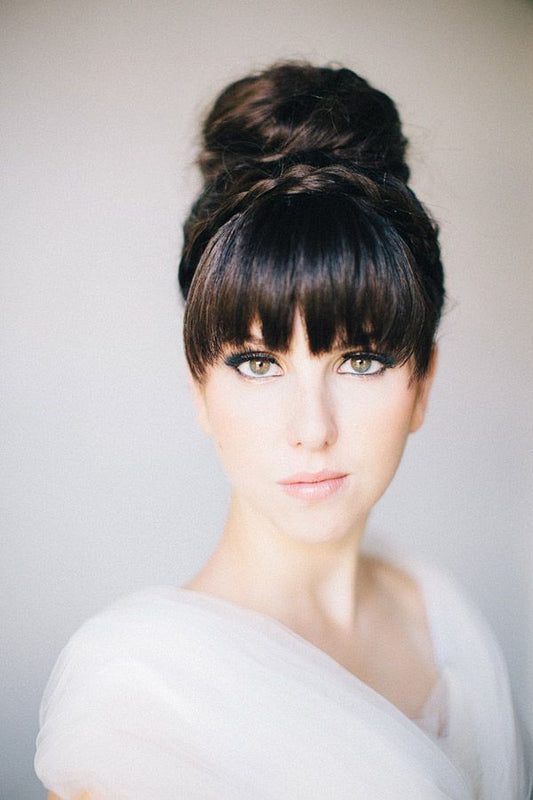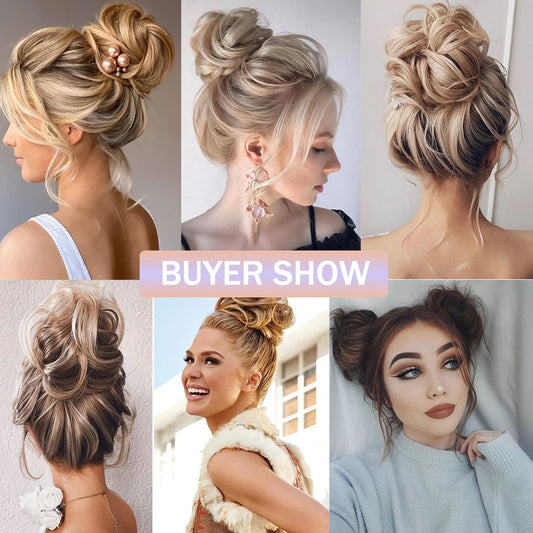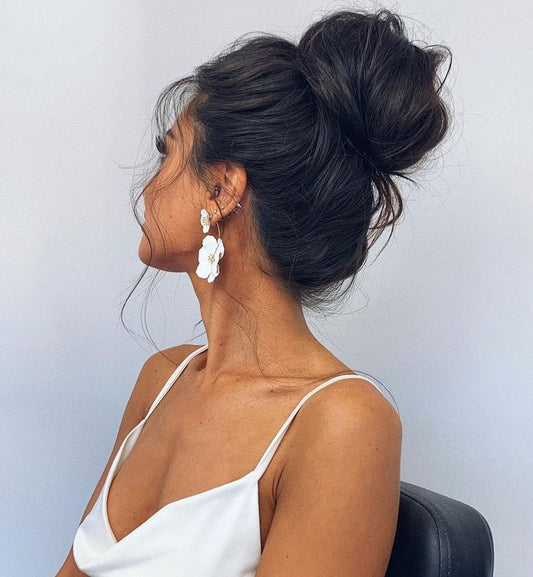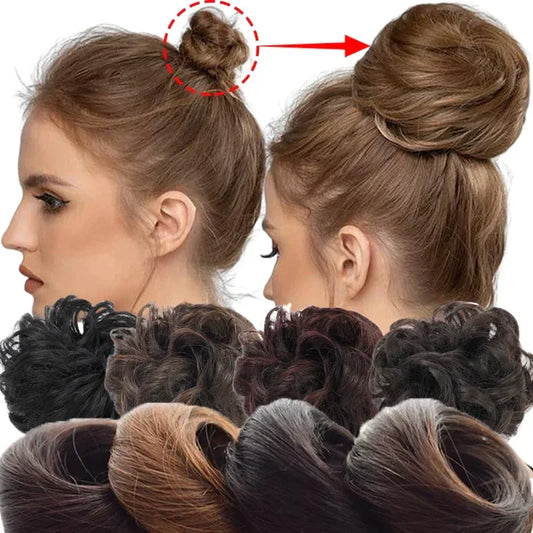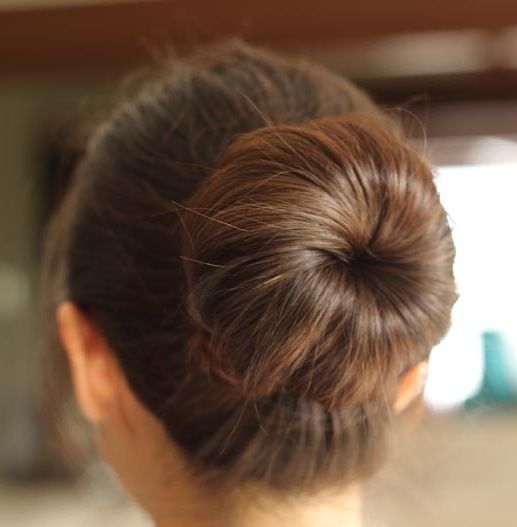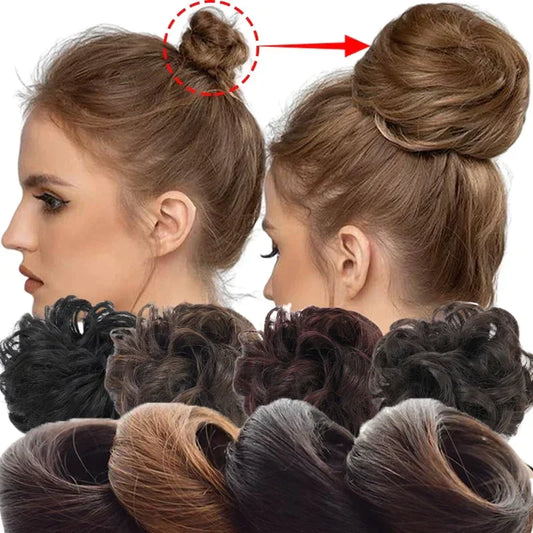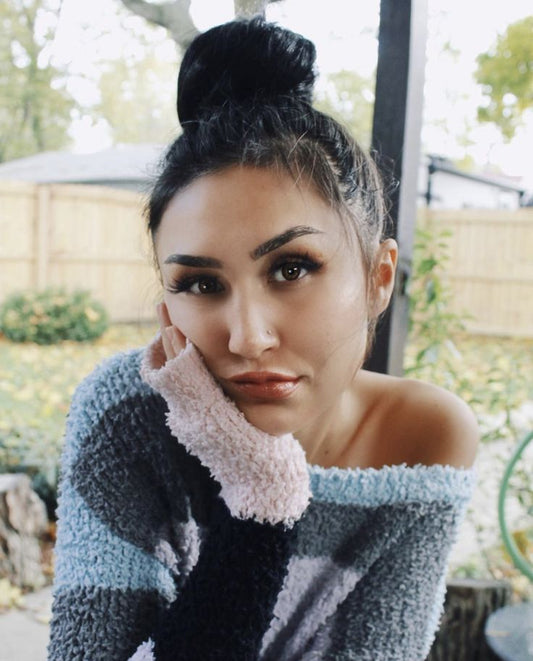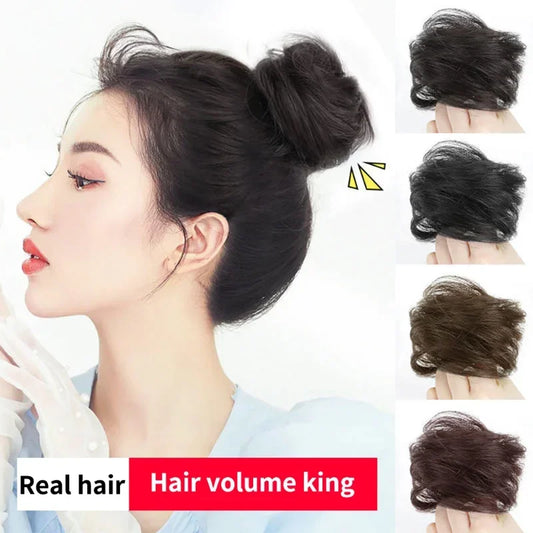About Classic Hair Buns
The Timeless Heritage Of Classic Hair Buns
Few hairstyles in human history have proven as timeless, versatile, and culturally significant as the classic hair bun. Defined by its simplicity—gathering hair and coiling it into a knot—it transcends geographical boundaries, class distinctions, and eras. From the adorned heads of Greek goddesses and Chinese empresses to the everyday modern woman heading into the office or the dance studio, the bun has endured as both a practical and elegant hairstyle.
What makes the bun unique is its adaptability. It can be neat and disciplined, casual and carefree, elaborate and ornate, or minimalist and sleek. It can signal status, culture, femininity, artistry, or professionalism, depending on its context. A bun can be accessorized with jewels and flowers for weddings, sculpted into sleek perfection for ballet, or worn messy for effortless chic.
Today, with innovations such as bun extensions, styling tools, and premium products from retailers like Fabulive, creating the perfect bun is easier than ever. Yet, behind every bun worn on city streets, fashion runways, or ceremonial halls lies centuries of history, symbolism, and artistry.
Origins Of The Bun Hairstyle In Ancient Civilizations
The bun traces back thousands of years, with variations found in almost every ancient culture.
Ancient Greece
Greek women often styled their hair into low buns at the nape, sometimes twisted with braids and adorned with golden pins, tiaras, or ribbons. Hairstyles reflected class and status—aristocratic women favored elaborate buns, while simpler knots were worn by common citizens.
Ancient Rome
In Rome, buns were elevated to art. Elite women wore towering coiled buns supported by wires and hairpieces. Empresses such as Julia Domna influenced trends across the empire, where buns signaled both wealth and Roman ideals of order and discipline.
Ancient China
In Chinese dynasties, buns were highly symbolic. The “ji” bun was worn by men and women, with its style indicating marital status, age, or social class. Empresses wore ornate buns decorated with jade, gold, and phoenix hairpins. Married women often styled hair into high buns, symbolizing maturity and dignity.
India
In India, buns (known as “juda”) have long been tied to femininity and celebration. Brides often wore intricately adorned buns with fresh jasmine flowers and jeweled pins. These styles were not just aesthetic but symbolic of fertility, grace, and prosperity.
Japan
The Japanese bun, or “chonmage,” was historically worn by samurai, symbolizing discipline and rank. For women, traditional buns were integral to bridal and geisha styling, often decorated with elaborate kanzashi ornaments.
Egypt And Mesopotamia
While braids dominated in Egypt, coiled hair resembling buns also existed, particularly among nobility. In Mesopotamia, artwork depicts women with knotted hairstyles indicating status.
Thus, across continents, the bun emerged as a hairstyle with dual purposes: practicality for gathering hair and symbolism as a reflection of culture, identity, and power.
Buns Through The Middle Ages And Renaissance
During the Middle Ages, buns shifted into modest, practical styles.
-
Europe: Women often covered buns with veils or wimples. Married women wore their hair in concealed buns as a sign of modesty.
-
Middle East: Buns were paired with headscarves and veils, often hidden but still central to women’s grooming.
-
Renaissance Italy: Buns returned to prominence. High, braided buns adorned with pearls and ribbons became fashionable, especially in courts. Portraits of noblewomen by artists like Botticelli show elaborate knotted styles symbolizing wealth.
The bun’s association with refinement solidified during this era, cementing its place as a marker of sophistication.
The Bun In The 18th And 19th Centuries
18th Century
European fashion introduced extravagant wigs, many styled into bun-like shapes piled high with curls, ribbons, and feathers. Though exaggerated, these hairstyles retained the essence of buns as central structures.
19th Century
The Victorian era brought more modest and natural buns. Women coiled hair into low knots at the nape, sometimes with braids encircling the bun. These styles were elegant, restrained, and consistent with Victorian ideals of femininity and propriety.
In Asia, buns continued to evolve: Chinese brides wore towering buns adorned with phoenix crowns, while Japanese women maintained elaborate bun styles tied to tradition.
20th Century Evolution Of Classic Buns
The 20th century revolutionized bun hairstyles.
-
1920s: Short bobs dominated, but longer-haired women styled sleek buns for evening glamour.
-
1940s: Wartime practicality made buns functional, as women working in factories needed hair secured. The “Victory Roll” often accompanied bun styles.
-
1960s: Audrey Hepburn’s high bun in Breakfast at Tiffany’s became iconic, symbolizing elegance and timeless chic.
-
1980s–1990s: Messy buns gained popularity for casual styling, contrasting sleek professional looks.
-
2000s: Buns diversified further, from gym-ready top knots to bridal chignons.
By the 21st century, the bun became truly universal—appearing in offices, weddings, fashion shows, gyms, and red carpets alike.
Symbolism Of Hair Buns Across Cultures
The bun carries meanings beyond aesthetics:
-
Discipline: Ballerinas, gymnasts, and martial artists wear buns for focus and precision.
-
Femininity: Bridal buns symbolize beauty, fertility, and grace.
-
Respect: Many cultural ceremonies adopt buns as formal hairstyles.
-
Authority: Sleek professional buns project control and confidence.
-
Cultural Identity: Each region has its unique bun tradition—whether Indian bridal buns, Japanese geisha buns, or Chinese phoenix buns.
The bun’s versatility ensures it adapts to multiple layers of symbolism.
Types Of Classic Hair Buns
-
Ballerina Bun: High, sleek, and precise, symbolizing grace.
-
Chignon: Low bun at the nape, refined and understated.
-
Braided Bun: Incorporates braids for texture and intricacy.
-
Messy Bun: Casual, relaxed, stylish.
-
Double Buns: Youthful, playful, often called “space buns.”
-
Twisted Bun: Hair twisted before coiling for added dimension.
-
French Knot: Elegant variation for formal occasions.
-
Donut Bun: Uses a foam donut for symmetry and volume.
Each type reflects different personalities, occasions, and aesthetics.
Bun Extensions And Modern Innovations
For women with short or thin hair, bun extensions provide fullness instantly. Available in synthetic and natural human hair, extensions come in colors from jet black to blonde, including warm tones like cinnamon or caramel.
Extensions allow wearers to achieve intricate styles without excessive time. They are lightweight, easy to secure, and blend naturally with existing hair. Modern innovations also include heat-resistant fibers, pre-styled buns, and eco-friendly synthetic materials.
Accessories That Define Buns
Accessories elevate buns from simple knots to statement hairstyles:
-
Hair Donuts: Provide shape and volume.
-
Pins And Clips: Decorative or functional.
-
Flowers: Bridal and festive adornments.
-
Jewels: Worn in royal or ceremonial buns.
-
Scarves: Add color and cultural symbolism.
From Indian jasmine garlands to Japanese kanzashi, accessories personalize buns while highlighting cultural identity.
Classic Buns In Fashion And Media
Buns dominate runways and red carpets. Celebrities like Jennifer Lopez, Meghan Markle, and Zendaya often wear buns to balance couture with sophistication. Designers appreciate buns because they highlight clothing while keeping hair neat.
Iconic moments—from Hepburn’s high bun to modern sleek bridal chignons—cement the bun as a style staple. Social media has further popularized tutorials, making buns accessible to millions globally.
The Psychology Of Wearing Buns
Hairstyles influence emotions and perceptions.
-
Sleek Bun: Suggests control, focus, professionalism.
-
Low Bun: Signals elegance and calm.
-
Messy Bun: Conveys freedom, creativity, relaxation.
-
Braided Bun: Suggests artistry and detail.
Buns not only affect how wearers feel but also how others perceive their confidence, discipline, and grace.
Maintenance Of Bun Extensions
To ensure longevity:
-
Wash gently with sulfate-free shampoo.
-
Store in breathable pouches.
-
Avoid heat tools on synthetics.
-
Condition human hair extensions regularly.
Proper care maintains quality, allowing endless bun styles without damage.
Buns Across Ages
-
Children: Cute top buns for school and play.
-
Teens/Young Adults: Messy buns for casual looks, sleek buns for events.
-
Mature Women: Chignons and twisted buns for elegance.
The bun adapts effortlessly across generations.
Case Studies: Buns Around The World
-
Indian Weddings: Brides wear low buns adorned with jasmine flowers and jewelry.
-
Japanese Geisha: Elaborate buns with kanzashi ornaments reflect tradition.
-
Ballet: Dancers worldwide secure buns for discipline and performance.
-
Hollywood: Actresses adopt buns to convey timeless glamour.
These examples highlight the bun’s global and cultural resonance.
The Role Of Fabulive
Fabulive has become a trusted provider of high-quality hair extensions and bun products. Its collections merge tradition with modern innovation, enabling women to enjoy versatile bun styles regardless of hair length or thickness. By focusing on premium craftsmanship and sustainable practices, Fabulive empowers women worldwide to embrace the timeless elegance of the classic bun.
The Future Of Classic Hair Buns
Trends suggest buns will remain central but with innovations:
-
Eco-Friendly Extensions: Sustainable fibers.
-
Smart Accessories: Heat-resistant, reusable styling aids.
-
Fusion Styles: Hybrid buns with braids, waves, or curls.
-
Customization: Personalized bun extensions for unique looks.
The bun’s adaptability ensures it will continue evolving while retaining its essence.
Conclusion
The classic bun is not just a hairstyle—it is a cultural artifact, a symbol of grace, and a timeless expression of beauty. From ancient civilizations to today’s fashion runways, buns have adapted to countless contexts without losing their fundamental appeal. Whether worn for discipline, elegance, or casual chic, the bun remains universal and enduring.
Through carefully curated products from Fabulive, achieving perfect buns becomes effortless, blending convenience with tradition. As styles evolve, the bun’s place as a symbol of timeless elegance remains secure.
Customer Reviews
-
Sophia Turner, USA: The bun extension blends so naturally. It looks professional yet stylish. ⭐⭐⭐⭐⭐
-
Amira Al-Farsi, UAE: Elegant, lightweight, and perfect for daily use. ⭐⭐⭐⭐
-
James Cole, UK: Bought one for my wife—she loves how quickly she can create neat buns. ⭐⭐⭐⭐⭐
-
Elena Müller, Germany: Textures feel authentic, and it stays comfortable for hours. ⭐⭐⭐⭐
-
Hannah Wilson, Canada: Perfect for weddings and parties. I’ve received endless compliments. ⭐⭐⭐⭐⭐
-
Olivia Brown, Australia: Great for both work and casual wear. Very versatile. ⭐⭐⭐⭐
-
Fatima Al-Harthy, Oman: Traditional yet modern. I wear it at cultural gatherings with pride. ⭐⭐⭐⭐⭐
-
Isabelle Dubois, France: Très chic and simple to use. It gives me Parisian sophistication. ⭐⭐⭐⭐
-
Ayesha Khan, Qatar: Reliable, elegant, and stylish—ideal for business meetings. ⭐⭐⭐⭐⭐
-
Michael Rossi, Italy: Gifted one to my sister. She says it’s her favorite hair accessory. ⭐⭐⭐⭐

